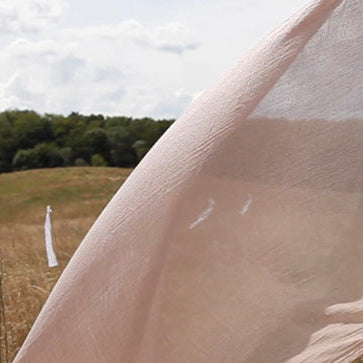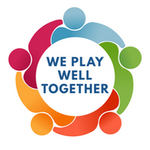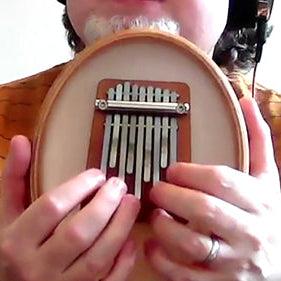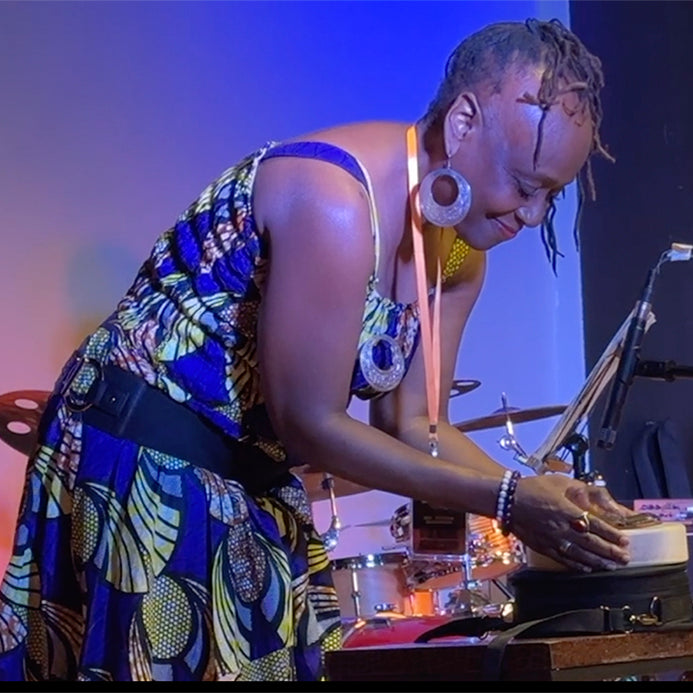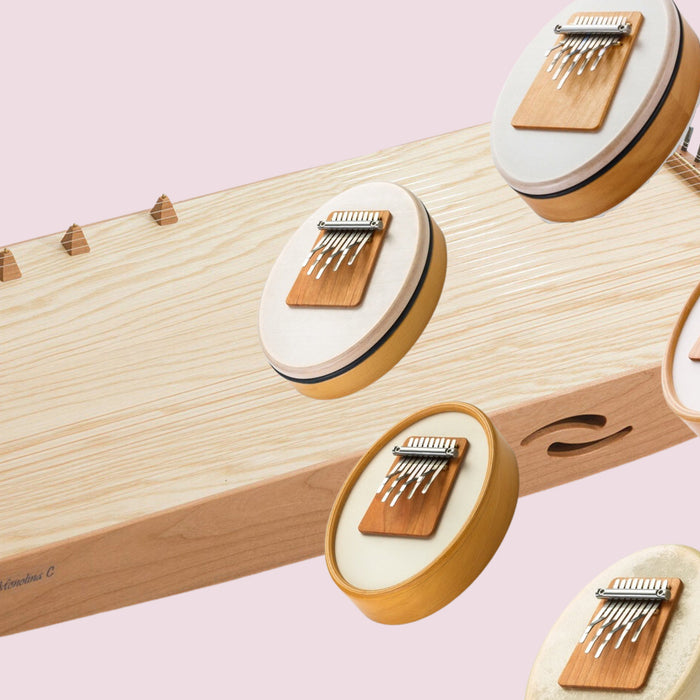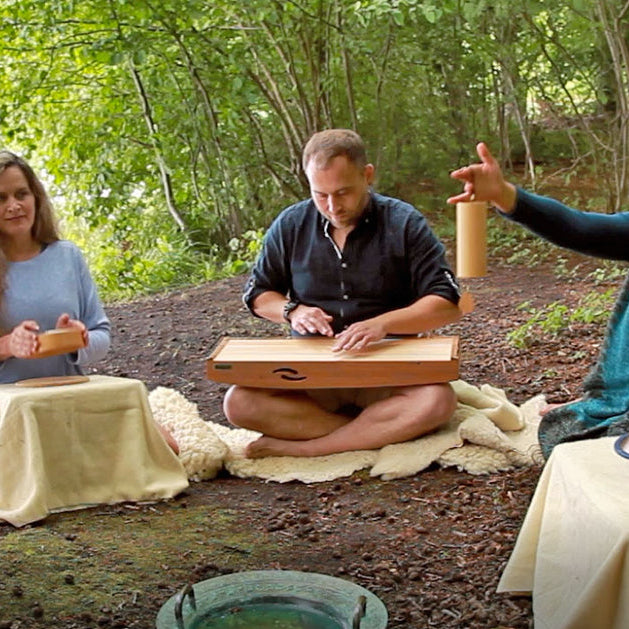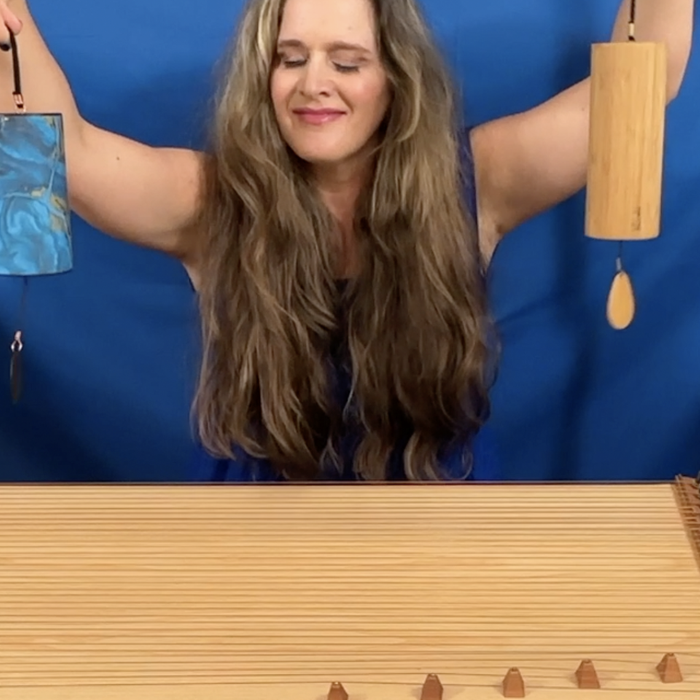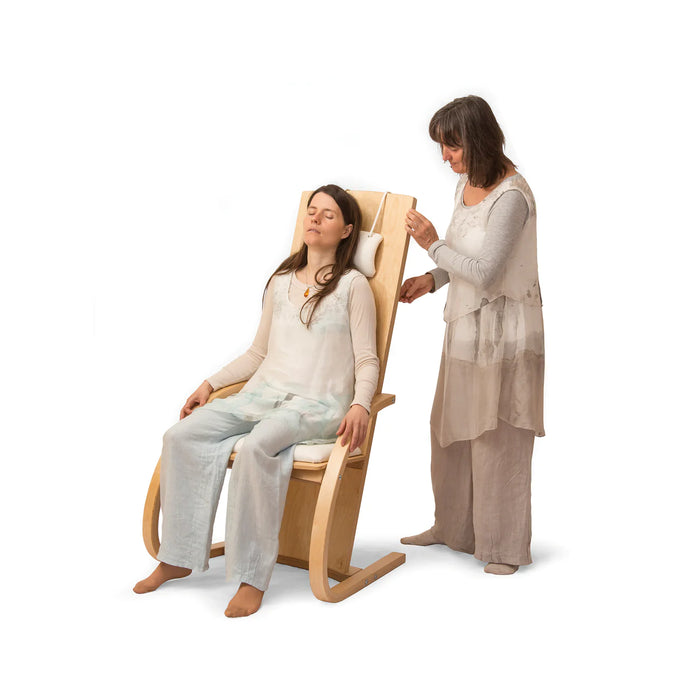In March, coinciding with the Spring Equinox, Susan Maule, a seasoned practitioner and friend of WE PLAY WELL TOGETHER, led the Monochord Monday Meetup.
She showcased the MonChair by feeltone, integrating it with instruments like the C# Hokema Sansula, Crystal Singing Bowls, and a Native American-style flute to create harmonious soundscapes. Susan demonstrated the MonChair's use in group settings, allowing participants to experience the enveloping sounds while seated in the chair, surrounded by others in a ceremonial rotation. She combined the MonChair's vibrations with the Zaphir "Sunray" Chime in C#, a C# tuned Sansula, and other selected instruments, offering a layered auditory experience.
This session exemplified the collaborative spirit of "We Play Well Together," highlighting the possibility of custom tunings for kalimbas and Sansulas to harmonize with existing instruments. Susan's broad expertise in the healing arts, alongside her unique approach to sound therapy, enriches the Monochord Monday Meetup community. Her contributions, along with over 60 other videos, are accessible in the group's video library for those who join the Monochord Monday Group on Zoom.
